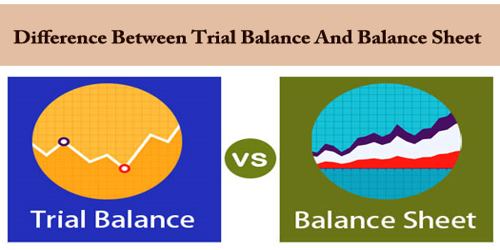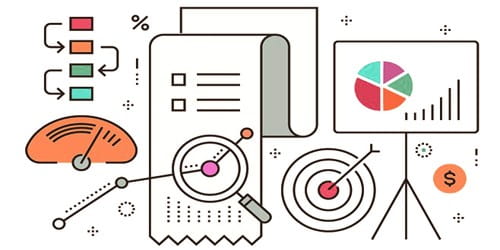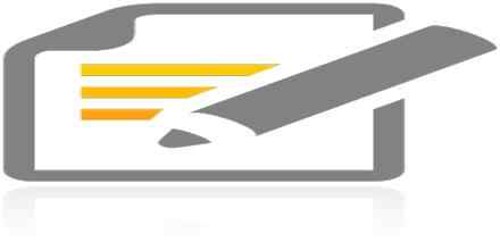Trial Balance –
Trial Balance is a statement that lists all the balances of the Real, Personal, and Nominal Account irrespective of Capital or Revenue account. It contains two columns debit and credit. If the transactions are recorded properly by giving a dual-sided effect and then posted systematically, then the total of both the columns would be identical.
However, the debit balance amounts are entered in one column and the credit balance amounts are entered in another column. Each column is then summed to prove that the total of the debit balances is equal to the total of the credit balances. In a manual accounting system, the trial balance would draw attention to the errors occurring when transactions were journalized, posted, account balances computed, etc. With accounting software, these clerical errors are unlikely.
But if the total of both the columns is distinct then the chances of errors in the recording and posting are there. However, some errors are not revealed through trial balance they are compensating errors, an error of omission, an error of commission, an error of principle, and others.
Balance Sheet –
A balance sheet is one of the five financial statements that are distributed outside of the accounting department and are often distributed outside of the company. The balance sheet summarizes and reports the balances from the asset, liability, and stockholders’ equity accounts that are contained in the company’s general ledger. The balance sheet is also referred to as the statement of financial position.
A balance sheet generally includes Assets and Liabilities. Asset example: marketable securities, account, prepaid expenses, inventory, fixed assets, inventory, assets, and cash, etc. It is divided into Current and Non-Current Assets. Current Assets are those assets which are readily converted into cash while the Non-Current Assets are those assets with the help of which the company runs the business. Liabilities example: accrued liabilities, account payable, short-term debt, customer prepayment, taxes payable, and long-term debt, etc. Liabilities are divided into two sections Current and Non-Current Liabilities. Current Liabilities are the debt, which is to be paid off within one year while the Non-Current Liabilities means the debt, the repayment of which can be done after a certain time.
Key Differences Between Trial Balance and Balance Sheet –
- Trial Balance is a part of the accounting process, that shows the debit and credit balances received from the ledger accounts. Whereas, the Balance Sheet is the statement that shows the company’s financial status by reviewing the capital, liabilities, and assets on a particular date.
- Trial Balance does not include closing stock while the Balance Sheet does not include opening stock.
- Trial Balance checks the arithmetical accuracy in the recording and posting while the balance sheet is prepared to determine the financial position of the company on a specific date
- Trial Balance is prepared after posting into ledger whereas Balance Sheet is prepared after the preparation of Trading and Profit & Loss Account.
- The Balance Sheet is the part of the Financial Statement while Trial Balance is not a part of the Financial Statement.
- Balances of all personal, real, and nominal accounts are shown in the trial balance. On the contrary, the Balance sheet shows the balances of personal and real accounts only.
- The trial balance is prepared at the end of each month, quarter, half-year or the financial year. Conversely, the balance sheet is prepared at the end of each month.
- The trial balance is prepared for internal use only; however, the balance sheet is prepared for both internal and external use, i.e. to inform outside parties about the financial condition of the entity.
There are many differences between the two statements. The Trial Balance and Balance Sheet are very dissimilar from each other. The preparation of Trial Balance is not compulsory at all, but the preparation of Balance Sheet is obligatory for every company. The Trial Balance is not read by the users of the financial statement or stakeholders, but the Balance sheet is used by them.
Trial Balance can be prepared as per the requirement of the organization while the Balance Sheet is prepared at a particular date which is usually at the end of the accounting year.
Information Sources:
















